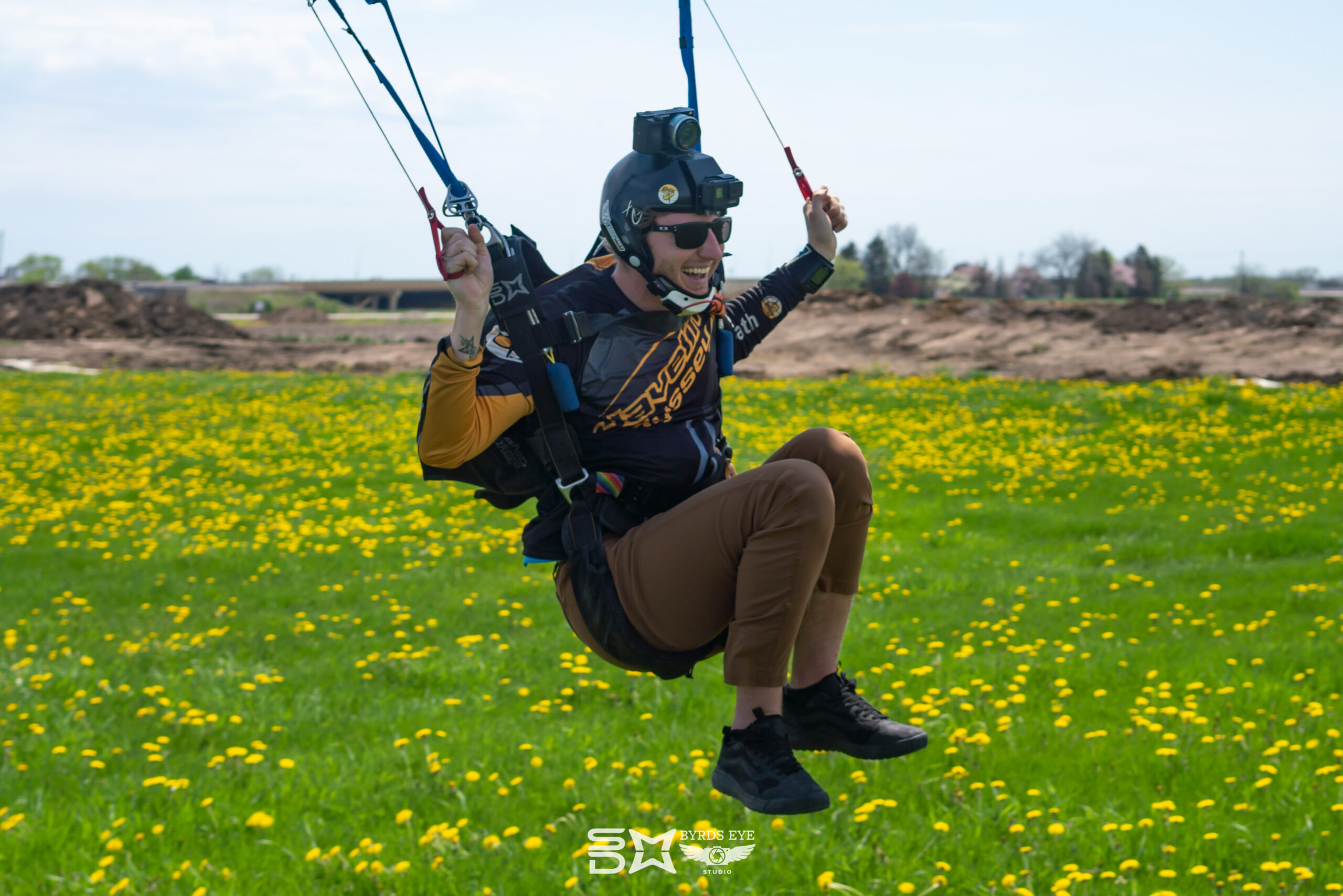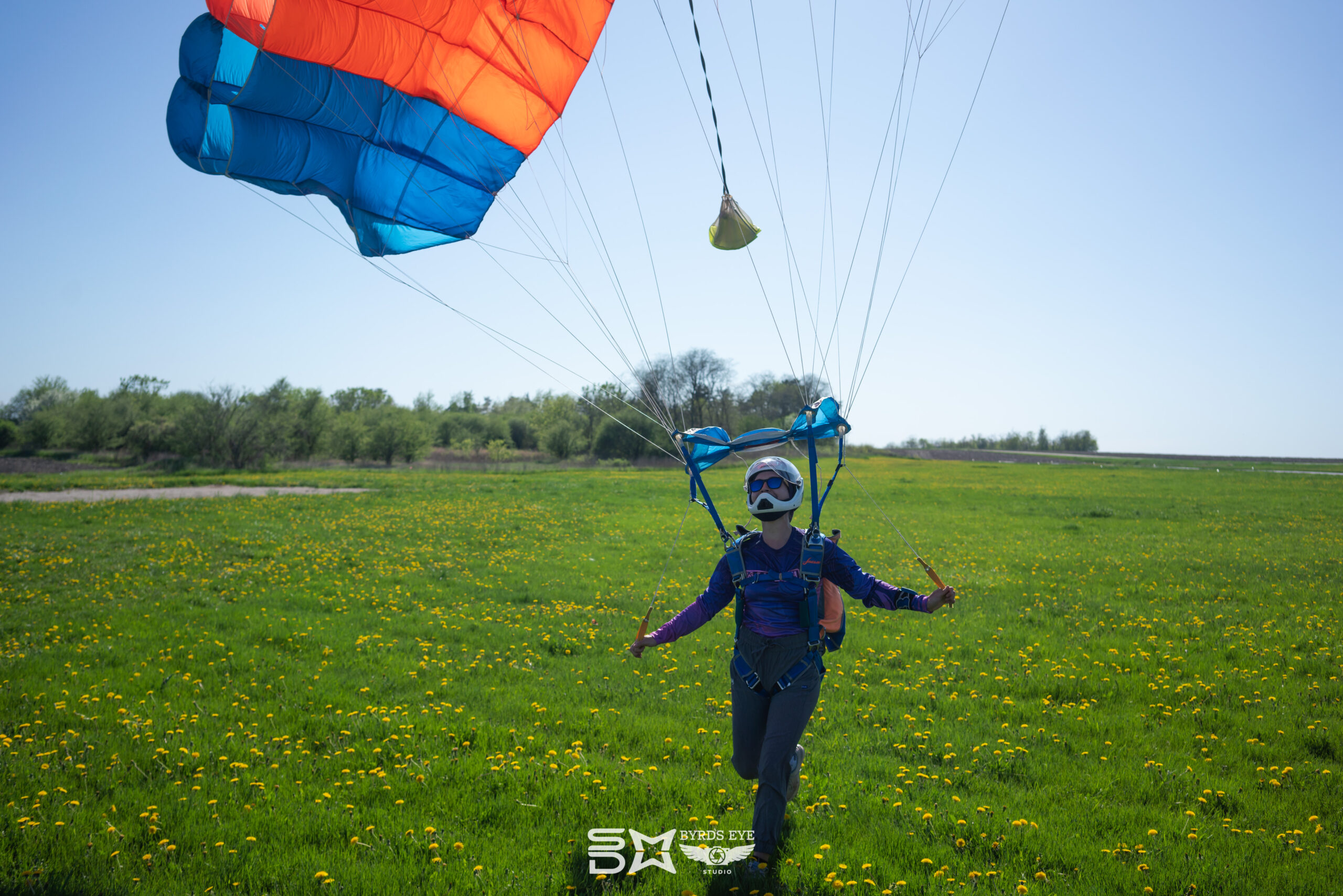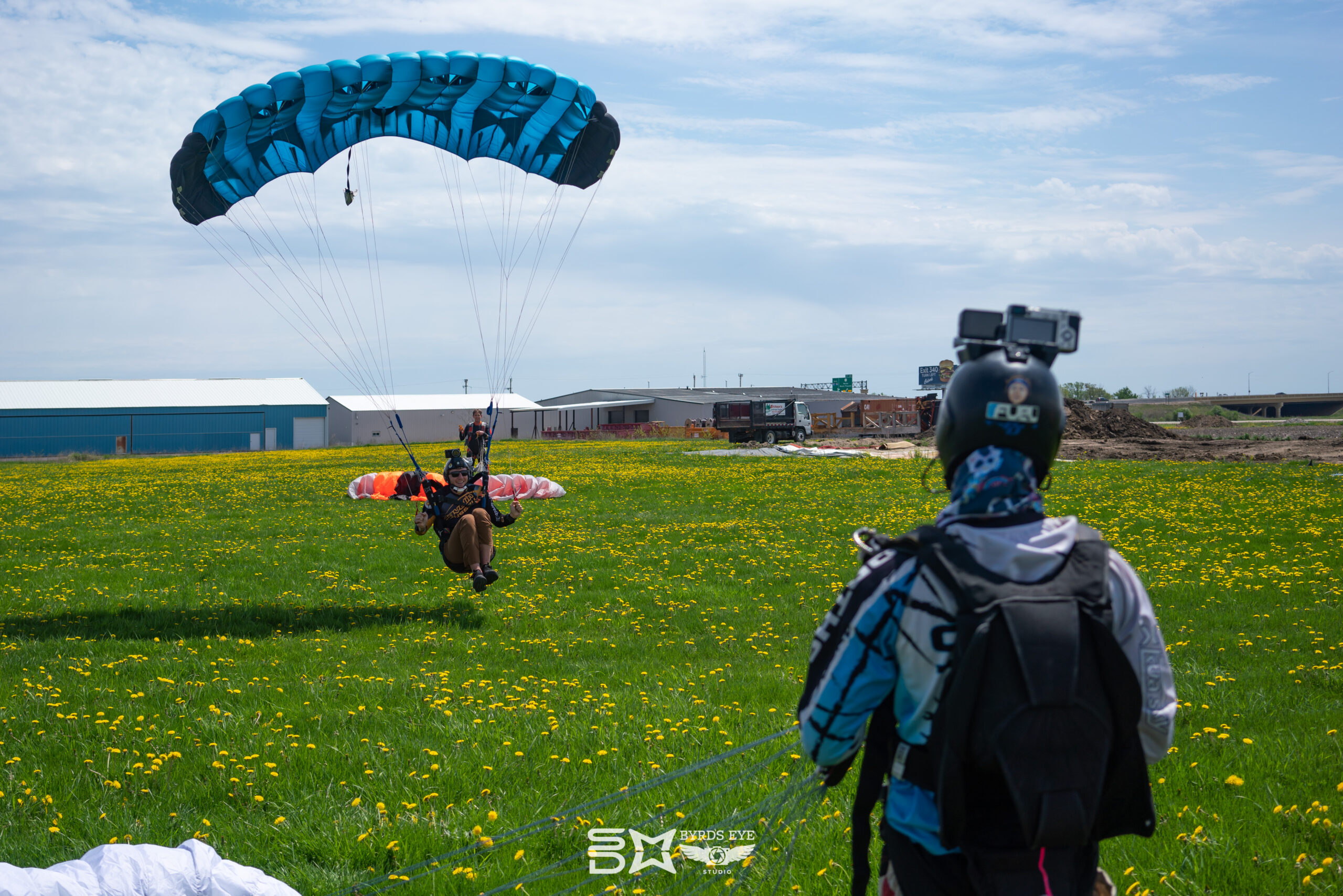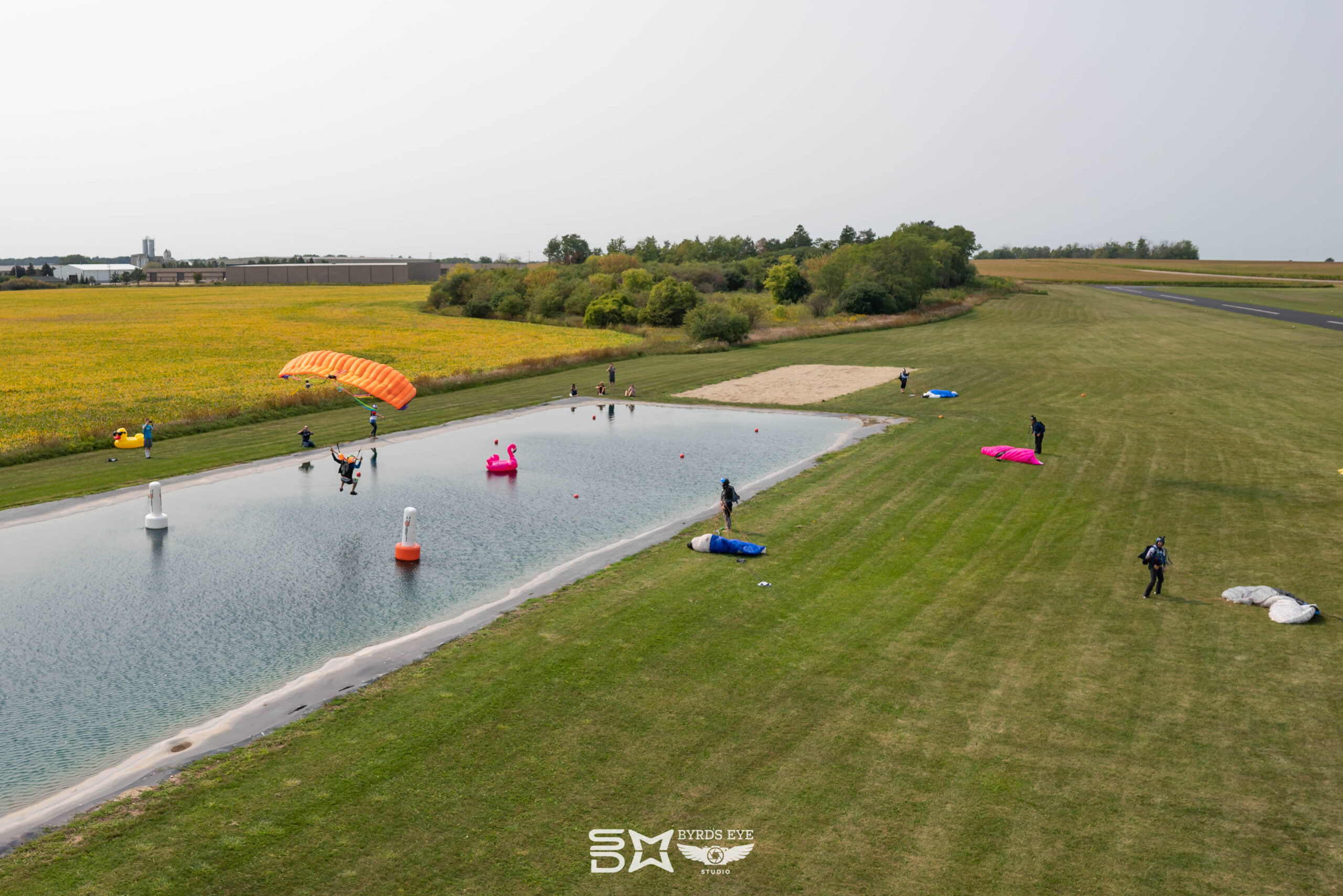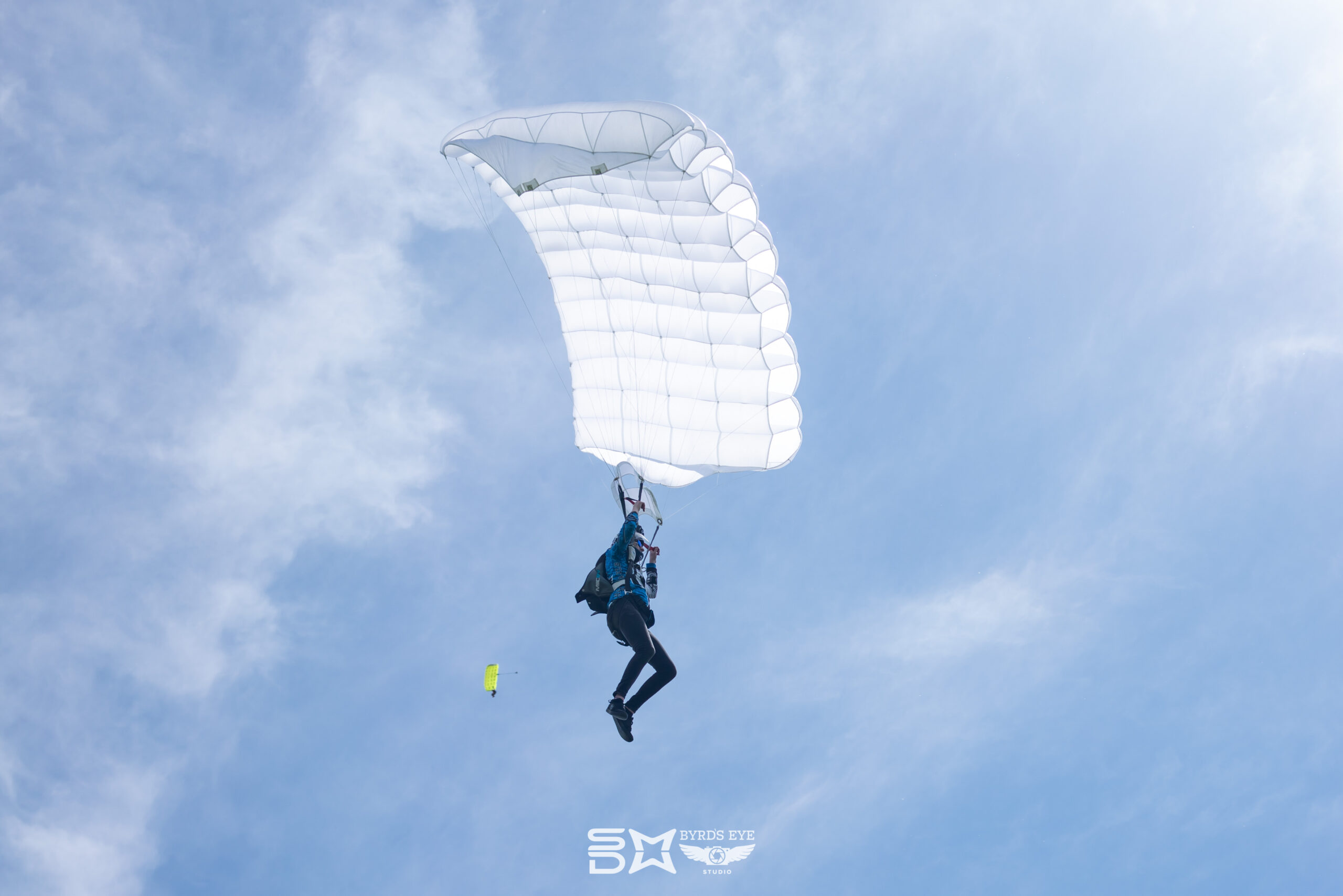Canopy Coaching
The struggle is real.
One of the most common challenges to new skydivers is mastering landing a parachute. The reality is, it’s not an easy thing to do well. It takes lots and lots of practice and continuing education through canopy coaching. If you’re a student or new jumper and you feel the struggle, you’re not alone and there’s help out there.
I’m gonna let you in on a secret. In 2010, when I started skydiving, I couldn’t stand up my landings or land accurately to save my life. I feet-knees-faceplanted every single landing, all over the airport. I landed on the road, in the corn fields, on the runway, on the apron in front of the hangar. I almost landed on the plane once when it pulled into the loading area. I was absolutely horrific as a student canopy pilot.
On my 11th jump, I flared too high, let the toggles up and dove my canopy straight into the ground and almost broke my back. At 13 jumps, I was still on radio. Looking back, I am shocked no one gave me the “bowling speech”. (This is where we tell someone they should consider taking up bowling because skydiving is not for them).
I eventually managed to land on the airport without radio assistance and got my license. However, I was still pounding in and landing super far from the hangar because I didn’t trust my accuracy. I was tired of getting banged up and walking back from the farthest point on the dz. It felt hopeless and I thought seriously about quitting. If any of this feels familiar to you, don’t give up hope.
